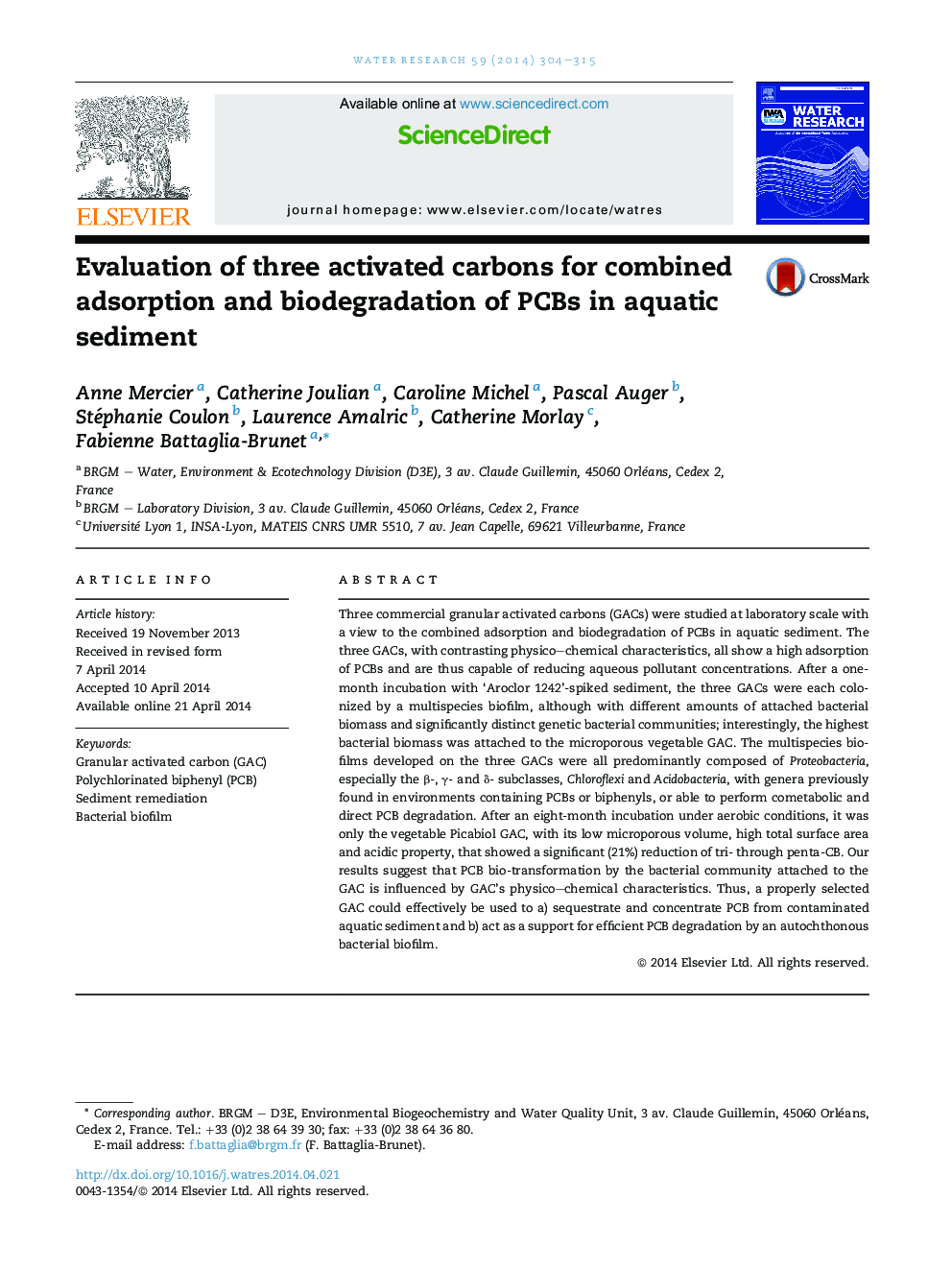| کد مقاله | کد نشریه | سال انتشار | مقاله انگلیسی | نسخه تمام متن |
|---|---|---|---|---|
| 4481549 | 1623109 | 2014 | 12 صفحه PDF | دانلود رایگان |

• Three different granular activated carbons (GACs) effectively adsorbed PCBs.
• Biofilm development on GACs was influenced by their surface properties.
• Biofilm diversity on GACs was influenced by their surface properties.
• Biodegradation was strongly influenced by GAC properties.
Three commercial granular activated carbons (GACs) were studied at laboratory scale with a view to the combined adsorption and biodegradation of PCBs in aquatic sediment. The three GACs, with contrasting physico–chemical characteristics, all show a high adsorption of PCBs and are thus capable of reducing aqueous pollutant concentrations. After a one-month incubation with ‘Aroclor 1242’-spiked sediment, the three GACs were each colonized by a multispecies biofilm, although with different amounts of attached bacterial biomass and significantly distinct genetic bacterial communities; interestingly, the highest bacterial biomass was attached to the microporous vegetable GAC. The multispecies biofilms developed on the three GACs were all predominantly composed of Proteobacteria, especially the β-, γ- and δ- subclasses, Chloroflexi and Acidobacteria, with genera previously found in environments containing PCBs or biphenyls, or able to perform cometabolic and direct PCB degradation. After an eight-month incubation under aerobic conditions, it was only the vegetable Picabiol GAC, with its low microporous volume, high total surface area and acidic property, that showed a significant (21%) reduction of tri- through penta-CB. Our results suggest that PCB bio-transformation by the bacterial community attached to the GAC is influenced by GAC's physico–chemical characteristics. Thus, a properly selected GAC could effectively be used to a) sequestrate and concentrate PCB from contaminated aquatic sediment and b) act as a support for efficient PCB degradation by an autochthonous bacterial biofilm.
Figure optionsDownload high-quality image (147 K)Download as PowerPoint slide
Journal: Water Research - Volume 59, 1 August 2014, Pages 304–315